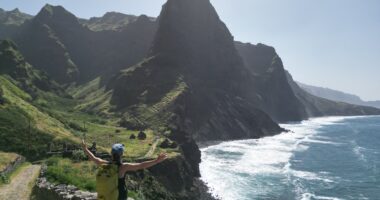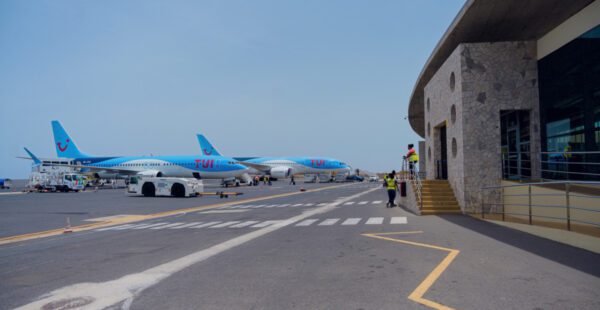
Cape Verde – How to Get There
Cape Verde Find the best transportation options Fogo Island 1. Introduction Imagine stepping onto an island where the air is infused with the aroma of
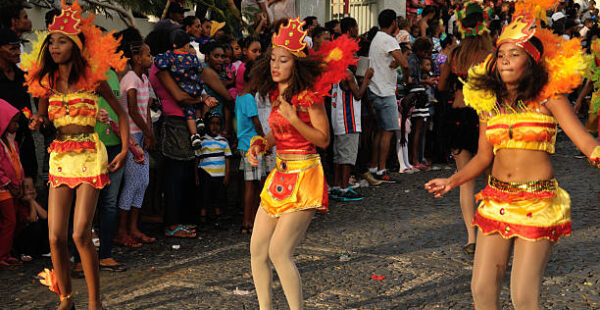
Cape Verde – Culture and Traditions
Cape Verde Experience the vibrant culture, music, and festivals that make it special Brava Island 1. Introduction Nestled in the heart of the Atlantic, Brava

Cape Verde – Climate
Cape Verde Understand the weather patterns to choose the best time for your visit Brava Island Cape Verde Imagine setting foot on an archipelago where
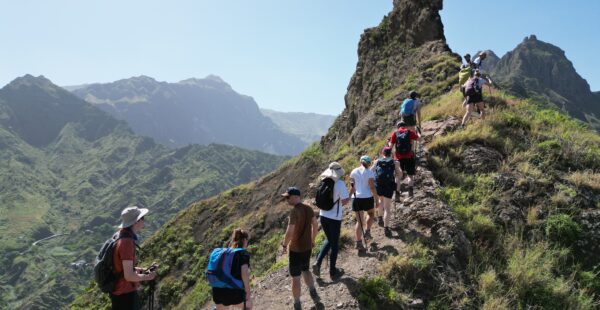
Cape Verde – What to Do
Cape Verde Enjoy various activities, such as hiking, snorkeling, or visiting local markets. Santiago Island 1. Introduction Santiago Island, the largest and most historically significant
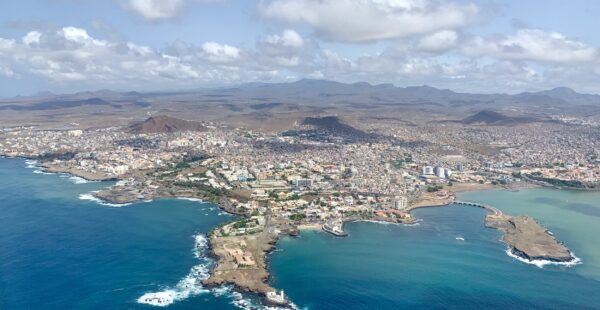
Cape Verde – Where to Go
Cape Verde Explore must-visit attractions and hidden gems around the island Fogo Island 1. Introduction Imagine stepping onto a canvas painted with nature’s finest hues,
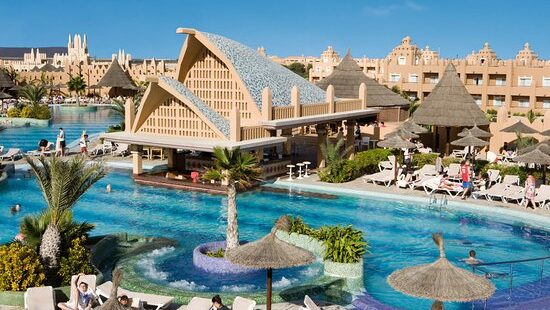
Cape Verde – Where to Stay
Cape Verde Find accommodation options that suit your needs, from hotels to guesthouses Fogo Island Introduction Nestled in the heart of the Atlantic, Fogo is

Cape Verde – Where to Eat
Cape Verde Fogo Island 1. Introduction Nestled in the Cape Verde archipelago, the volcanic island of Fogo offers not only breathtaking landscapes but also a
Cape Verde – History
Dive into the rich history of Cape Verde, from its colonial past to modern-day significance
Brava Island
1. Introduction
Tucked away in the southwestern reaches of the Cape Verde archipelago, Brava is often referred to as the “Island of Flowers,” a hidden gem known for its lush greenery and serene landscapes. Though smaller and more secluded than its neighboring islands, Brava offers an equally captivating blend of natural beauty and rich history. From its dramatic cliffs to its tranquil valleys, the island invites travelers to uncover the tales woven into its unique cultural tapestry. As you explore its peaceful villages and breathtaking vistas, Brava’s past emerges, offering a journey through time that is as vivid as the island’s vibrant flora.
2. Early History
The story of Brava begins in the late 15th century when Portuguese explorers first came upon its shores. Unlike the arid lands of other Cape Verdean islands, Brava’s fertile soil and fresh water sources quickly attracted settlers. Imagine the early explorers discovering this island, hidden in the fog and lush with potential. Though Brava remained largely uninhabited for some time, its proximity to the flourishing whaling industry in the mid-17th century brought significant economic activity to the island. Brava became a refuge for sailors, and its harbors were bustling with ships seeking rest and provisions. The island’s remote location made it both a safe haven and a center for maritime trade.
3. Colonial Era
As the Portuguese presence solidified, Brava grew into a quiet agricultural hub, where small-scale farming and fishing sustained the local population. The island’s isolation allowed its residents to cultivate a distinct culture, enriched by the mingling of Portuguese and African influences. During this period, Brava became an important stop for whaling ships from New England, and many Cape Verdean men sailed the Atlantic, creating strong ties with American ports. These transatlantic connections are still visible today, reflected in the architecture, language, and traditions of Brava, where Cape Verdean Creole blends seamlessly with vestiges of Portuguese and American heritage.
4. The 20th Century and Independence
Brava’s role in the broader narrative of Cape Verde’s independence may seem quiet compared to the more politically active islands, but its contribution was significant. The island’s tight-knit communities fostered a sense of resilience and unity, critical to the country’s eventual liberation from Portuguese rule in 1975. The men of Brava, many of whom had traveled abroad, brought back ideas of independence and change, helping to ignite the Cape Verdean struggle for freedom. Today, the island honors this period with monuments and celebrations that reflect the pride of its people in their shared history.
5. Modern Development
In the years following independence, Brava has remained a peaceful and largely untouched island, resisting the rapid modernization seen on other Cape Verdean islands. The island’s natural beauty and unspoiled landscapes have attracted a different kind of traveler—those seeking tranquility, authenticity, and a deeper connection to Cape Verdean culture. Brava’s villages, with their charming stone houses and narrow streets, continue to thrive on agriculture, fishing, and a slow-paced lifestyle. The island is also a leader in eco-tourism, preserving its environment while offering visitors a glimpse of its pristine nature.
6. Attractions and Cultural Heritage
Brava’s rich cultural heritage is on full display in its music, festivals, and architecture. The island’s capital, Vila Nova Sintra, is a picturesque town nestled in the mountains, where colonial-style houses dot the landscape, and flowers bloom year-round. Walking through its streets, you’ll feel the blend of Cape Verdean and Portuguese history. Brava is also home to some of the most beautiful churches in the archipelago, standing as testaments to the island’s deep-rooted faith. The rhythms of morna, Cape Verde’s soulful music, echo through the island, with Brava being the birthplace of renowned composer Eugénio Tavares, whose music is celebrated throughout the country.
Irresistible Invitation
Brava’s history is as tranquil and profound as the island itself. Its resilience, cultural richness, and natural beauty make it a place of quiet strength and deep-rooted traditions. As you wander through its verdant landscapes and engage with its welcoming people, take time to reflect on the island’s journey through the centuries. Brava invites you to explore its past while soaking in the peaceful atmosphere that defines its present, offering a truly unforgettable experience in this serene corner of Cape Verde.
If you are ready to discover the wonders of Cape Verde, do not hesitate to contact one of our local agents. They are prepared to guide you on an unforgettable journey through the islands, offering personalized tips and authentic experiences that will make your trip truly special. Enjoy every moment and let yourself be captivated by the natural beauty and vibrant culture of Cape Verde. Get in touch now and start planning your adventure!
Fogo Island
1. Introduction
Rising majestically from the depths of the Atlantic, Fogo is the second-largest island in the Cape Verde archipelago, renowned for its dramatic volcanic landscapes and rich cultural heritage. With its towering peak, Pico do Fogo, and lush green valleys, Fogo is not only a haven for nature lovers but also a canvas of history painted with stories of resilience and transformation. From its volcanic origins to its vibrant traditions, the island offers a compelling narrative that captivates all who venture to its shores.
2. Early History
The saga of Fogo commenced in the 15th century when Portuguese explorers first discovered its rugged terrain. Picture the awe of these sailors as they gazed upon the imposing volcano, a silent guardian of the island’s fate. Although initially uninhabited, Fogo soon attracted settlers drawn by its fertile soil and strategic location for trade. The island’s early history, however, is not without its darker chapters, as the scars of the transatlantic slave trade cast a long shadow. Walking through the island’s valleys today, one can almost feel the weight of history, a poignant reminder of the struggles and resilience of those who came before.
3. Colonial Era
As the Portuguese established settlements, Fogo flourished into a vibrant agricultural hub, particularly known for its production of coffee and wine. Envision the sun-drenched vineyards and coffee plantations that adorned the hillsides, tended by the hands of enslaved individuals who labored tirelessly. This period not only shaped Fogo’s economy but also cultivated a unique cultural blend, rich in traditions and influences. The legacy of Portuguese culture remains evident in the island’s language, festivities, and gastronomy, where the flavors of traditional dishes reflect the island’s diverse heritage.
4. The 20th Century and Independence
The journey to independence for Cape Verde was fraught with trials, but by 1975, Fogo emerged as part of a sovereign nation. Local leaders and activists from the island played a crucial role in the struggle for freedom, their spirits unyielding despite adversity. Today, visitors can explore historical sites that commemorate these pivotal moments, standing as testament to the tenacity and courage of those who fought for their homeland’s liberation.
5. Modern Development
Since gaining independence, Fogo has experienced significant transformations, blending its rich heritage with modern advancements. The island, known for its stunning landscapes and unique culture, has become a sought-after destination for eco-tourism and adventure seekers. The vibrant sounds of local markets and festivals fill the air, inviting visitors to immerse themselves in the island’s lively atmosphere. While embracing modernity, Fogo remains dedicated to preserving its natural beauty and cultural traditions, ensuring that the essence of the island endures for generations to come.
6. Attractions and Cultural Heritage
As you journey through Fogo, you will encounter a wealth of historical landmarks and natural wonders that narrate the island’s story. The charming towns of São Filipe and Chã das Caldeiras offer a glimpse into local life, where the traditional architecture and bustling markets reflect the island’s cultural roots. Engage with the local community by participating in festivals, where the rhythms of batuque and the flavors of traditional dishes come together in joyful celebration. The island’s musical heritage is a vibrant thread woven into its historical fabric, inviting all to join in the festivities.
Irresistible Invitation
Fogo’s history is not merely a collection of events; it is the heartbeat of its identity. The stories of endurance, culture, and transformation remind us of the island’s journey through time. As you traverse its volcanic landscapes and soak in the breathtaking views, take a moment to appreciate the rich tapestry of history that surrounds you. Fogo invites you to discover its past while enjoying its present, creating unforgettable memories in this enchanting corner of the Cape Verde archipelago.
If you are ready to discover the wonders of Cape Verde, do not hesitate to contact one of our local agents. They are prepared to guide you on an unforgettable journey through the islands, offering personalized tips and authentic experiences that will make your trip truly special. Enjoy every moment and let yourself be captivated by the natural beauty and vibrant culture of Cape Verde. Get in touch now and start planning your adventure!
Santiago Island
1. Introduction
Situated at the heart of the Cape Verde archipelago, Santiago is the largest and most populous island, a vibrant centerpiece that pulses with the energy of its people and history. Known for its diverse landscapes, ranging from rugged mountains to lush valleys, Santiago is a tapestry of natural beauty and cultural richness. The island has long been a pivotal player in Cape Verde’s history, its cities and towns bearing witness to centuries of trade, migration, and struggle. From its early settlement to its modern identity, Santiago is a dynamic island that invites exploration into its storied past.
2. Early History
The history of Santiago began in the mid-15th century when Portuguese navigators first discovered the island. Drawn by its fertile lands and strategic position, they quickly established the first European settlement in Cape Verde, Ribeira Grande (now Cidade Velha). Imagine the early settlers landing on Santiago’s shores, greeted by its green hills and fertile valleys, which promised sustenance and prosperity. However, Santiago’s significance in history is also linked to the dark chapter of the transatlantic slave trade. The island became a major hub for the trafficking of enslaved Africans, its ports echoing with the heavy toll of human suffering—a haunting reminder of the past that lingers in the island’s heritage.
3. Colonial Era
During the colonial period, Santiago flourished as a center of commerce and agriculture, its fertile soil yielding crops like sugarcane, coffee, and maize. Envision bustling marketplaces in the growing towns, where goods from across Africa, Europe, and the Americas were exchanged. Portuguese colonial rule left an indelible mark on Santiago’s culture, seen today in its architecture, language, and religious traditions. At the same time, the island’s population, largely descended from African slaves, developed its own unique cultural identity. The rhythms of batucada, funaná, and morna were born from this fusion of African and Portuguese influences, filling the island with a vibrant musical and cultural tradition that endures to this day.
4. The 20th Century and Independence
The road to independence was long and fraught with challenges, but Santiago was a key battleground in the fight for Cape Verde’s sovereignty. In the mid-20th century, political movements gained momentum, with activists and intellectuals from Santiago playing central roles in the push for freedom. By 1975, Cape Verde had won its independence, with Santiago at the forefront of this historic achievement. Today, the island stands as a proud testament to the resilience of its people, who fought for their right to self-determination. Monuments and historical sites scattered across the island serve as powerful reminders of the struggles and victories that shaped the nation.
5. Modern Development
Since gaining independence, Santiago has emerged as a thriving hub of culture, politics, and economic development. Praia, the capital of Cape Verde, is a bustling city where modernity meets tradition, offering visitors a glimpse into the island’s evolving identity. While Santiago has embraced growth and change, it has also remained deeply connected to its roots. Agricultural production, though modernized, continues to be a vital part of the island’s economy, and efforts to preserve its natural landscapes and cultural heritage have become key to its sustainable development. Today, Santiago is both a reflection of Cape Verde’s past and a beacon for its future.
6. Attractions and Cultural Heritage
Santiago is a treasure trove of cultural landmarks and historical sites that tell the island’s story. Cidade Velha, a UNESCO World Heritage Site, is home to the first cathedral built in West Africa and the imposing Forte Real de São Filipe, both standing as symbols of the island’s colonial past. As you explore the island, you’ll encounter the vibrant rhythms of traditional music and dance, whether in a village celebration or a formal festival. Santiago’s cultural heritage is also proudly displayed in its craftsmanship, with local artisans creating intricate pottery, weaving, and woodwork that reflect the island’s African roots. The rich traditions of Santiago are not just historical artifacts; they are a living, breathing part of everyday life.
Irresistible Invitation
Santiago’s history is a tapestry woven with threads of resilience, cultural fusion, and transformation. From the early days of colonization to its role in Cape Verde’s independence, the island’s journey is one of both hardship and triumph. As you walk through its bustling cities, explore its ancient streets, and listen to its vibrant music, you’ll feel the pulse of a people who have shaped and been shaped by their land. Santiago invites you to uncover its history while experiencing the richness of its culture in the present, offering an unforgettable journey through the heart of Cape Verde.
If you are ready to discover the wonders of Cape Verde, do not hesitate to contact one of our local agents. They are prepared to guide you on an unforgettable journey through the islands, offering personalized tips and authentic experiences that will make your trip truly special. Enjoy every moment and let yourself be captivated by the natural beauty and vibrant culture of Cape Verde. Get in touch now and start planning your adventure!
Boa Vista Island
1. Introduction
Nestled in the heart of the Atlantic Ocean, Boa Vista is the easternmost island of the Cape Verde archipelago, a stunning jewel celebrated for its vast sandy beaches and captivating landscapes. With its striking dunes and crystal-clear waters, Boa Vista is not only a paradise for sun-seekers but also a treasure trove of history that whispers tales of its past. From its discovery to its vibrant culture, the island has evolved, leaving a legacy that beckons travelers to explore its rich tapestry of stories.
2. Early History
The journey of Boa Vista began in the 15th century when Portuguese explorers first set foot on its shores. Imagine the sound of waves crashing against rugged cliffs as these intrepid sailors arrived at the island, captivated by its beauty and potential. Although uninhabited initially, Boa Vista soon saw the arrival of settlers who recognized its strategic position along trade routes. However, the island’s history is also marked by the somber shadows of the transatlantic slave trade. As you walk along the beaches today, you can almost hear the echoes of the past, a reminder of the struggles endured by countless souls who were brought here against their will.
3. Colonial Era
As the Portuguese established settlements, Boa Vista transformed into a bustling center of agriculture and trade. Picture the fields of sugarcane swaying gently in the breeze, cultivated by the hands of enslaved people who toiled tirelessly. This era shaped the island’s economy and introduced a blend of cultures that enriched its identity. The Portuguese influence is evident in the island’s language, traditions, and, notably, its vibrant festivals, where the rhythms of funaná and morna fill the air with joy and nostalgia.
4. The 20th Century and Independence
The path to independence was fraught with challenges, but by 1975, Cape Verde emerged as a sovereign nation. Boa Vista played a crucial role in this journey, with local leaders and activists rallying for freedom. As the island embraced change, the spirit of resilience blossomed. Today, you can visit historical sites that commemorate these pivotal moments, reflecting the determination of those who fought for their homeland.
5. Modern Development
Since gaining independence, Boa Vista has undergone remarkable transformations. The once-quiet island is now a sought-after destination for tourists from around the globe. The sound of laughter fills the air as visitors indulge in sun-soaked days and vibrant nights. While embracing modernity, the island remains committed to sustainability, with initiatives aimed at preserving its natural beauty. Local traditions endure, celebrating the rich cultural heritage that defines Boa Vista.
6. Attractions and Cultural Heritage
As you explore Boa Vista, you’ll encounter a wealth of historical landmarks that tell the island’s story. The quaint churches, with their whitewashed walls and colorful interiors, stand as testaments to the island’s enduring faith and cultural roots. Immerse yourself in the local culture by participating in traditional festivals, where music and dance unite generations in celebration. From the lively beats of the batucada to the soulful melodies of morna, the island’s musical heritage is a vibrant thread woven into its historical fabric.
Irresistible Invitation
Boa Vista’s history is not just a collection of events; it is the essence of its identity. The stories of resilience, culture, and transformation remind us of the island’s journey through time. As you wander its shores and explore its landscapes, take a moment to appreciate the rich history that surrounds you. Boa Vista invites you to uncover its past while basking in its present, creating unforgettable memories in this enchanting corner of the world.
Sal Island
1. Introduction
Situated in the northeastern part of the Cape Verde archipelago, Sal Island stands as a beacon of sun, sea, and sand, drawing travelers from all over the world to its pristine shores. Known for its arid, flat landscape and azure waters, Sal offers more than just a picturesque escape—it is a land rich in history, where centuries-old tales intermingle with the island’s modern allure. From its early beginnings to its current status as a premier tourist destination, Sal’s story is one of transformation, resilience, and cultural vibrancy.
2. Early History
The history of Sal begins in the 15th century when Portuguese explorers first set their sights on the island. At that time, Sal was uninhabited, its barren, volcanic landscape a stark contrast to the lush greenery of some of its neighboring islands. The island’s name, “Sal,” meaning salt, was inspired by the vast salt flats that became its most valuable resource. Early settlers quickly recognized the island’s potential for salt production, and by the 17th century, the island was bustling with activity as it exported salt to Europe and the Americas. The trade in salt became a defining feature of Sal’s early history, shaping its economy and its role within the Cape Verdean archipelago.
3. Colonial Era
As the Portuguese solidified their presence on the island, Sal became a key player in the broader colonial ambitions of the empire. The island’s salt mines were heavily exploited, with workers, many of whom were enslaved, laboring under harsh conditions to meet the demands of European markets. This period also brought a fusion of cultures, as Portuguese settlers introduced their language, traditions, and Catholic faith to the island. The colonial legacy is still visible today, particularly in the island’s architecture and religious practices, as the influence of Portugal left an indelible mark on Sal’s identity.iam sodales in laoreet.
4. The 20th Century and Independence
Like the rest of Cape Verde, Sal’s journey toward independence was shaped by the larger movements for decolonization that swept across Africa in the mid-20th century. By 1975, Cape Verde gained independence from Portugal, and Sal, with its strategic position and economic importance, played a significant role in the nation’s development. The island’s salt production continued, but the rise of tourism in the later decades would begin to redefine its economy. The spirit of resilience and pride in this newfound independence is palpable in the people of Sal, whose cultural heritage remains a cornerstone of the island’s identity.
5. Modern Development
Since independence, Sal has undergone a dramatic transformation. From a sleepy, salt-producing island, it has evolved into one of the most visited destinations in Cape Verde, renowned for its world-class resorts, pristine beaches, and vibrant water sports scene. The island’s main town, Santa Maria, is now a lively hub of activity, where visitors and locals mingle against a backdrop of turquoise waters and golden sands. Despite the rapid development, Sal remains committed to balancing tourism with the preservation of its natural environment, with efforts to protect its beaches and marine life. The island’s economy thrives on this delicate balance between modernity and sustainability.
6. Attractions and Cultural Heritage
Sal’s unique history is reflected in its attractions, from the famous Pedra de Lume salt crater to the vibrant streets of Santa Maria. A visit to the salt mines of Pedra de Lume offers a glimpse into the island’s past, where salt was once the lifeblood of the local economy. The town of Espargos, the island’s administrative center, provides a more urban experience, with its markets and colonial architecture. Cultural festivals, such as the annual music festivals, bring the island’s rich musical traditions to life, celebrating genres like morna and coladeira. Music and dance remain an integral part of Sal’s cultural heritage, connecting past and present through the rhythms that define Cape Verdean identity.
Irresistible Invitation
Sal’s history is a testament to its ability to adapt and thrive through changing times. From its humble beginnings as a barren island to its transformation into a global tourist destination, Sal has managed to preserve its cultural essence while embracing the opportunities of the modern world. As you stroll along its sun-drenched beaches or explore its historical landmarks, take a moment to reflect on the island’s journey through time. Sal invites you to not only experience its natural beauty but also to connect with the deep-rooted stories that have shaped its past and continue to define its future.
If you are ready to discover the wonders of Cape Verde, do not hesitate to contact one of our local agents. They are prepared to guide you on an unforgettable journey through the islands, offering personalized tips and authentic experiences that will make your trip truly special. Enjoy every moment and let yourself be captivated by the natural beauty and vibrant culture of Cape Verde. Get in touch now and start planning your adventure!
São Nicolau Island
1. Introduction
Tucked away in the northeastern part of the Cape Verde archipelago, São Nicolau is a hidden gem known for its mountainous terrain, lush valleys, and unspoiled beauty. This island, often overlooked by travelers, offers a serene escape with its dramatic landscapes and rich cultural heritage. Its history, marked by exploration, colonization, and resilience, weaves a captivating story of transformation. From its discovery to its present-day charm, São Nicolau invites those who venture here to uncover its historical treasures and immerse themselves in its vibrant culture.
2. Early History
The story of São Nicolau began in the 15th century when Portuguese explorers first arrived on its rugged shores. The island, named after Saint Nicholas, initially remained sparsely populated due to its mountainous terrain. However, it wasn’t long before settlers recognized the island’s agricultural potential, especially in its fertile valleys. Imagine the early days of exploration as these settlers began to cultivate the land, planting the seeds of the island’s future. Though São Nicolau escaped the scale of the transatlantic slave trade that plagued other islands, its history remains deeply intertwined with Cape Verde’s colonial past, echoing the hardships and perseverance of its people.
3. Colonial Era
During the colonial period, São Nicolau developed as an agricultural hub, known particularly for its production of coffee and sugarcane. Picture the terraced fields stretching across the island’s hills, tended by the islanders who labored under the Portuguese colonial system. Despite the challenges, São Nicolau fostered a unique cultural identity, with traditions blending African and European influences. This era also saw the growth of small towns like Ribeira Brava, the island’s historical center, where colonial architecture still stands as a testament to its past. The Portuguese influence is visible not only in the buildings but also in the island’s religious customs, language, and festivals.
4. The 20th Century and Independence
The 20th century brought significant changes to São Nicolau, as Cape Verdeans across the islands began to rally for independence. Though the island played a quieter role compared to others, the spirit of resistance was alive in its people. By 1975, Cape Verde had secured its independence, and São Nicolau embraced this new era of sovereignty. The post-independence period was one of reflection and renewal, as the island sought to preserve its cultural heritage while adapting to modern times. Today, monuments and historical sites on the island commemorate the journey toward freedom, serving as a reminder of the resilience of its people.
5. Modern Development
Since Cape Verde’s independence, São Nicolau has maintained its quiet, unhurried pace of life while gradually welcoming visitors who seek a more authentic experience of the archipelago. The island’s economy continues to rely on agriculture, with an increasing focus on sustainability and preserving its natural environment. While it remains off the beaten path for mass tourism, São Nicolau’s charm lies in its ability to offer a tranquil retreat. In recent years, the island has embraced eco-tourism and small-scale cultural tourism, showcasing its natural beauty and rich traditions to those who seek to explore beyond the more commercialized islands.
6. Attractions and Cultural Heritage
São Nicolau is a land of contrasts, where rugged mountains meet fertile valleys and small villages dot the landscape. The island is home to several historical landmarks that speak to its rich cultural heritage. Ribeira Brava, with its colonial-era buildings and charming streets, offers a glimpse into the island’s past, while the towering Monte Gordo National Park provides breathtaking views and hiking opportunities. Traditional festivals, such as the annual São João celebration, bring the island’s vibrant culture to life, where the rhythms of morna and coladeira create an unforgettable atmosphere. São Nicolau’s culture is deeply rooted in music, storytelling, and the strong community bonds that define island life.
Irresistible Invitation
São Nicolau’s history is one of quiet strength, shaped by the enduring spirit of its people and the natural beauty of its landscapes. From its early days of settlement to its role in Cape Verde’s independence, the island has evolved while holding on to its rich cultural roots. As you explore São Nicolau, whether trekking its mountain trails or wandering through its historic towns, take a moment to reflect on the deep history that has shaped this remarkable island. São Nicolau beckons you to discover its stories, creating a lasting connection between its past and its present.
If you are ready to discover the wonders of Cape Verde, do not hesitate to contact one of our local agents. They are prepared to guide you on an unforgettable journey through the islands, offering personalized tips and authentic experiences that will make your trip truly special. Enjoy every moment and let yourself be captivated by the natural beauty and vibrant culture of Cape Verde. Get in touch now and start planning your adventure!
Santa Luzia Island
1. Introduction
Tucked away in the vast expanse of the Atlantic Ocean, Santa Luzia is the smallest and least inhabited island of the Cape Verde archipelago. Though it may not boast the bustling towns or lively cultural scenes of its neighboring islands, Santa Luzia possesses a rugged, untouched beauty that captures the imagination. With its stark landscapes, dramatic cliffs, and serene beaches, this island remains an enigmatic part of Cape Verde’s history, where nature reigns supreme, and the echoes of the past still linger in the wind.
2. Early History
The story of Santa Luzia began in the 15th century when Portuguese explorers first set foot on its shores, much like the rest of the Cape Verde islands. Imagine the sense of discovery as these early sailors navigated the rocky coastline, met with barren landscapes that offered little in terms of resources or shelter. Initially uninhabited and deemed unsuitable for permanent settlement due to its dry and arid conditions, Santa Luzia was largely overlooked in the early days of the archipelago’s colonization. Over time, however, the island saw sporadic use as a grazing ground for livestock by nearby settlers, marking its modest role in Cape Verde’s early history.
3. Colonial Era
During the colonial era, Santa Luzia remained mostly uninhabited, its harsh environment making sustained settlement difficult. Picture the occasional herders and fishermen braving the island’s challenging terrain, seeking to make a modest living from the sparse resources it offered. Unlike other islands that developed thriving agricultural economies, Santa Luzia’s aridity limited its economic potential. Nevertheless, the island’s isolation became an asset for fishermen who used its shores as a base to explore the rich fishing grounds of the surrounding waters. Despite its relative obscurity during the colonial period, Santa Luzia’s quiet presence endured, a place untouched by the rapid changes shaping the rest of the archipelago.
4. The 20th Century and Independence
The 20th century saw Cape Verde embark on its path to independence, but Santa Luzia remained on the fringes of this historical moment. The island’s lack of a permanent population meant it played little direct role in the political movements sweeping across the archipelago. However, in the broader context of Cape Verde’s independence, Santa Luzia symbolized the untamed and resilient spirit of the islands. By 1975, when Cape Verde achieved sovereignty, the island stood as a reminder of the archipelago’s diverse landscapes and histories, even in its silence. Today, Santa Luzia is a protected nature reserve, a status that reflects the country’s growing commitment to preserving its natural heritage.
5. Modern Development
Since gaining independence, Santa Luzia has remained largely untouched by modern development. The island is now uninhabited, with no permanent settlements or infrastructure. However, its significance has shifted from a neglected land to an ecological treasure. Conservation efforts have been put in place to protect Santa Luzia’s unique ecosystem, particularly its marine life and bird species. Scientists and environmentalists visit the island to study its biodiversity, while occasional visitors come to experience its pristine beaches and untouched wilderness. Santa Luzia’s modern identity is one of preservation, where the focus lies on maintaining its natural beauty rather than altering its landscape.
6. Attractions and Cultural Heritage
Though Santa Luzia lacks the historical landmarks and vibrant cultural heritage of other Cape Verdean islands, its allure lies in its natural splendor. The island’s rugged coastline and tranquil beaches offer a serene escape from the bustling world. Its wildlife, particularly the seabirds that nest along its shores, is a testament to the island’s ecological importance. Visitors are often drawn to Santa Luzia’s isolation and raw beauty, where the absence of human habitation allows nature to flourish in its purest form. For those who seek adventure, the island’s untouched terrain offers a unique experience of solitude and connection with the natural world.
7. Conclusion
Santa Luzia’s history is not defined by grand events or flourishing cultures, but rather by its quiet endurance as a symbol of Cape Verde’s natural heritage. The island’s journey through time is one of resilience, where nature, rather than human intervention, has shaped its identity. As you explore the shores of this remote island, take a moment to appreciate the silence and solitude that define Santa Luzia. It is an island where the past whispers through the wind and the landscape remains unchanged, inviting you to witness a world where nature stands as the true protagonist.
São Vicente Island
1. Introduction
Located in the heart of the Cape Verde archipelago, São Vicente is an island where history, culture, and modernity seamlessly blend. Known for its lively capital, Mindelo, São Vicente is often referred to as the cultural hub of Cape Verde, famous for its music, art, and festivals. With a rich maritime history and a vibrant cultural scene, the island has grown from humble beginnings into a beacon of creativity and resilience. From its early days of discovery to its current role as a center for artistic expression, São Vicente offers a unique glimpse into the soul of Cape Verde.
2. Early History
São Vicente’s story began in the 15th century, when Portuguese explorers, navigating the Atlantic, stumbled upon its shores. Despite its discovery in 1462, the island remained largely uninhabited for centuries due to its arid landscape and lack of fresh water. Imagine the barren, windswept plains greeting those early explorers, their sails billowing in the Atlantic breeze. It wasn’t until the 19th century, with the development of the coal industry to fuel steamships crossing the Atlantic, that São Vicente’s true potential was realized. The port of Mindelo quickly became a crucial hub for international maritime trade, forever altering the island’s course.
3. Colonial Era
As the Portuguese solidified their presence, São Vicente evolved into a bustling center of trade, particularly with the rise of Mindelo as a strategic port. Picture the busy docks of the late 19th century, where ships from Europe, Africa, and the Americas converged, unloading goods and fostering an exchange of ideas and cultures. This influx of international influences enriched São Vicente’s cultural identity, making it a melting pot of traditions. During this period, the island also became known for its artistic and musical heritage, with the rhythms of morna and coladeira—genres that capture the soul of Cape Verde—taking root and flourishing in the lively streets of Mindelo.
4. The 20th Century and Independence
The 20th century brought about significant changes for São Vicente and its people. With the decline of the coal industry, the island faced economic hardship, but the spirit of its people remained unbroken. Cape Verde’s independence movement gained momentum, and by 1975, the archipelago had gained its sovereignty. São Vicente, with its rich cultural scene, played an essential role in shaping Cape Verdean identity during this time. Mindelo, in particular, became a hotbed for political and artistic discourse, with local leaders and intellectuals contributing to the fight for independence. The island’s role in this pivotal moment in history remains a point of pride for its residents.
5. Modern Development
Since independence, São Vicente has continued to grow, balancing tradition with modernity. Mindelo remains the cultural heart of the island, known for its vibrant nightlife, bustling markets, and the world-renowned Baía das Gatas music festival. As tourism becomes increasingly important, São Vicente has embraced its role as a destination for cultural and creative exploration. The island has also become a center for education, with institutions like the University of Cape Verde attracting students from across the nation. Yet, despite this development, São Vicente remains committed to preserving its unique identity, ensuring that its artistic heritage continues to thrive.
6. Attractions and Cultural Heritage
São Vicente’s allure lies in its rich cultural offerings and historical landmarks. Mindelo, with its colonial architecture and colorful streets, offers a window into the island’s past. Visit the iconic Torre de Belém or the Presidential Palace to experience the historical legacy firsthand. The island’s musical traditions are deeply woven into its cultural fabric, with live performances of morna, funaná, and coladeira bringing life to the city’s many festivals. The annual Carnaval in Mindelo is a spectacle not to be missed, with vibrant parades, intricate costumes, and infectious music. São Vicente’s artistic heritage continues to captivate visitors, offering a cultural experience unlike any other.
Irresistible Invitation
São Vicente’s history is a testament to the resilience, creativity, and cultural richness of its people. From its early days as a maritime hub to its modern role as a center for artistic expression, the island’s story is one of transformation and endurance. As you explore its streets, enjoy its music, and meet its people, you’ll discover that São Vicente is more than just an island—it’s a living expression of Cape Verde’s soul. Whether basking in its historical sites or dancing to its rhythmic beats, São Vicente invites you to become part of its ongoing story.
If you are ready to discover the wonders of Cape Verde, do not hesitate to contact one of our local agents. They are prepared to guide you on an unforgettable journey through the islands, offering personalized tips and authentic experiences that will make your trip truly special. Enjoy every moment and let yourself be captivated by the natural beauty and vibrant culture of Cape Verde. Get in touch now and start planning your adventure!
Santo Antão Island
1. Introduction
Nestled in the northwest of the Cape Verde archipelago, Santo Antão is a breathtaking island renowned for its dramatic landscapes and rich cultural heritage. Characterized by its steep mountains, lush valleys, and vibrant greenery, Santo Antão is a paradise for nature lovers and adventurers alike. Yet, beyond its stunning vistas, the island is steeped in history, echoing tales of resilience and transformation. From its early settlement to its vibrant traditions, Santo Antão offers a captivating narrative that invites exploration and appreciation.
2. Early History
The history of Santo Antão began in the 15th century when Portuguese explorers first encountered its rugged terrain and abundant resources. Imagine the sight of ships approaching the island, their crews filled with wonder at the towering peaks and fertile valleys. Initially, the island remained largely uninhabited, but it soon attracted settlers who recognized its agricultural potential. However, the darker aspects of history are also present, as the island became a waypoint in the transatlantic slave trade. Today, as you traverse its hills and valleys, you can almost feel the lingering spirit of those who endured hardship in pursuit of freedom.
3. Colonial Era
As Portuguese settlements expanded, Santo Antão evolved into a vital agricultural hub, particularly known for its production of sugarcane, coffee, and various crops. Envision the terraced fields cascading down the mountainsides, cultivated by the labor of enslaved individuals who worked tirelessly under the sun. This period not only shaped the island’s economy but also fostered a rich cultural tapestry, blending Portuguese influences with African traditions. The island’s vibrant festivals, marked by lively music and dance, are a testament to this cultural fusion, celebrating both heritage and community.
4. The 20th Century and Independence
The struggle for independence was a significant chapter in Santo Antão’s history, culminating in Cape Verde’s emergence as a sovereign nation in 1975. The island played an essential role in this journey, with local leaders and activists advocating for social and political change. The spirit of determination and resilience that marked this era is still palpable today. Visitors can explore historical sites that honor these pivotal moments, serving as reminders of the courage and sacrifices made in the name of freedom.
5. Modern Development
Since gaining independence, Santo Antão has experienced remarkable transformations while maintaining its unique charm. Once a secluded island, it is now attracting a growing number of visitors eager to explore its natural beauty and rich cultural offerings. The sounds of laughter and music fill the air as tourists and locals come together in celebration. Embracing modernity, the island is also committed to sustainable tourism, promoting initiatives that protect its environment and cultural heritage for future generations.
6. Attractions and Cultural Heritage
As you wander through Santo Antão, you will encounter numerous historical landmarks that narrate the island’s story. The quaint villages, adorned with colorful houses and welcoming locals, reflect the island’s vibrant culture and community spirit. Engage in local festivities to immerse yourself in Santo Antão’s traditions, where music and dance connect generations. The rhythms of traditional music resonate through the valleys, weaving a lively tapestry of the island’s rich musical heritage that adds depth to its historical narrative.
Irresistible Invitation
The history of Santo Antão is not merely a sequence of events; it embodies the soul of its people and their enduring spirit. The stories of resilience, culture, and transformation remind us of the island’s remarkable journey through time. As you traverse its majestic landscapes and engage with its communities, take a moment to reflect on the rich history that envelops you. Santo Antão invites you to discover its past while relishing the beauty of its present, crafting unforgettable memories in this extraordinary corner of the Cape Verde archipelago.
If you are ready to discover the wonders of Cape Verde, do not hesitate to contact one of our local agents. They are prepared to guide you on an unforgettable journey through the islands, offering personalized tips and authentic experiences that will make your trip truly special. Enjoy every moment and let yourself be captivated by the natural beauty and vibrant culture of Cape Verde. Get in touch now and start planning your adventure!
Visit Cape Verde !
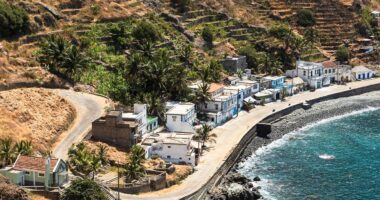
Brava
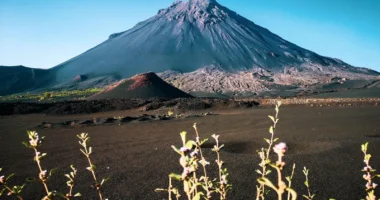
Fogo
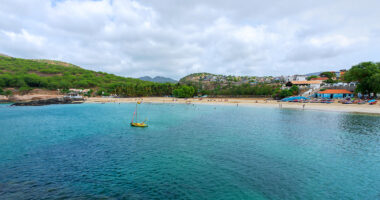
Santiago
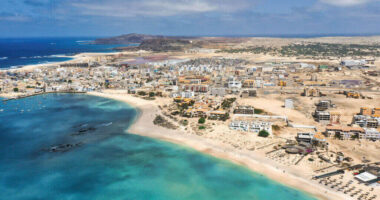
Boa Vista
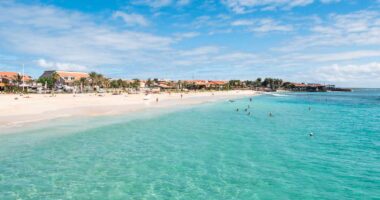
Sal

São Nicolau
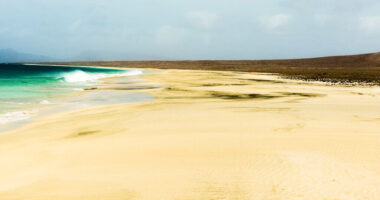
Santa Luzia
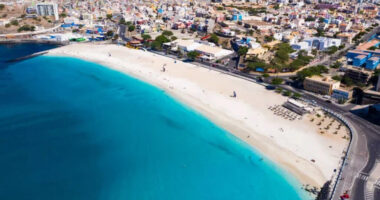
São Vicente
